I’ve been trying out more sunscreens! Unfortunately trying out sunscreens for me is a bit of a chore. Over 90% of sunscreens that I try will clog my pores or give me deep throbbing cysts, and waiting for my skin to sort itself out takes about a week. Then I’ll try the sunscreen again, to more-or-less confirm that it’s the sunscreen and not something else – this usually gives the same clogged pores and/or cysts, which will take another week or so to sort out. I try to give my skin breaks from trying out new sunscreens to limit the damage, plus I try to have reasonably clear skin when filming videos – YouTube is full of commenters who will judge the accuracy of your skincare information solely on the state of your skin, and won’t hesitate to tell the world exactly what they think of you based on the first 4 seconds of a video. Such is life!
Note: Sunscreens aren’t approved in US/EU/UK/AU, but are approved in their respective countries (JP/KR).
Anessa Perfect UV Sunscreen Mild Milk
Anessa is a Japanese brand that has a number of cult favourite sunscreens. Perfect UV Sunscreen Mild Milk SPF 50+ PA++++ was the first one I’ve ever tried – it was given to me by makeup artist Larry Yeo when I visited Singapore earlier this year.
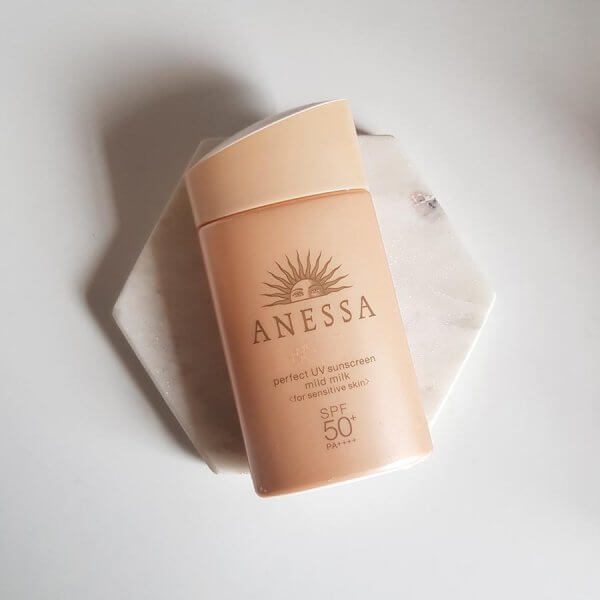
This sunscreen is formulated for sensitive skin, with no alcohol, fragrance or parabens. It’s a combination sunscreen that uses both inorganic zinc oxide and titanium dioxide, and newer organic filters Uvinul T 150, Uvinul A Plus and Tinosorb S.
It has an 80 minute water resistant rating. I’ve found that it’s easier to find water resistant Japanese sunscreens than Korean sunscreens, so if you’re looking for a sunscreen with a nice texture to wear when exercising or sweating heavily, it’s worth looking at Japanese brands.
Unfortunately this sunscreen has a texture that’s great for dry skin but bad for oily skin like mine – think La Roche-Posay Anthelios Fluid, Krave Beauty The Beet Shield/Beet the Sun or Ultra Violette Queen Screen. It has a siliconey glide that never seemed to set properly on my skin. It’s marketed to have Aqua Booster EX Technology, which is meant to spread the sunscreen more evenly when it contact with water or sweat, so it might have something to do with that. It also claims to have a powder ingredient that’s friction-resistant, so it rubs off less easily.
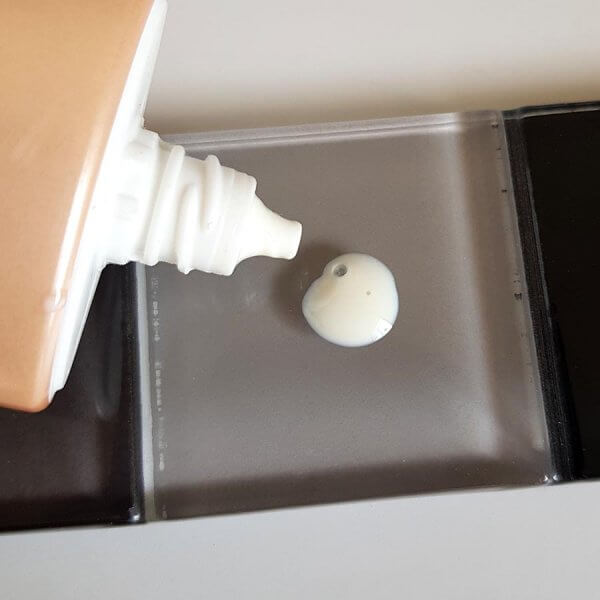
Like with most sunscreens, this gave me clogged pores after about 4 consecutive days (note that my skin is particularly prone to clogging with sunscreens, particularly inorganic sunscreens – most people won’t have this problem!).
Related post: How to Use Comedogenicity Ratings (with Video)
Active ingredients: Zinc Oxide (12.18%), Uvinul T 150 (1.5%), Uvinul A Plus (1.5%), Tinosorb S (0.5%), Titanium Dioxide
Ingredients: Cyclopentasiloxane, Zinc Oxide (12.18%), Diisopropyl Sebacate, Methyl Methacrylate Crosspolymer, Water (Aqua), Cetyl Ethylhexanoate, Pentaerythrityl Tetraethylhexanoate, Triethylhexanoin, Dimethicone, Butylene Glycol, Diethylhexyl Succinate, Titanium Dioxide, Polymethylsilsesquioxane, Glycerin, PEG-9 Polydimethylsiloxyethyl Dimethicone, Silica, PEG-10 Dimethicone, Ethylhexyl Triazone (1.5%), Diethylamino Hydroxybenzoyl Hexyl Benzoate (1.5%), Aluminum Hydroxide, Disteardimonium Hectorite, Stearic Acid, Trimethylsiloxysilicate, Bis-Ethylhexyloxyphenol Methoxyphenyl Triazine (0.5%), Hydrogen Dimethicone, PEG/PPG-14/7 Dimethyl Ether, Sodium Chloride, Sodium Citrate, Sodium Metabisulfite, Dipotassium Glycyrrhizate, Tocopherol, Sodium Acetylated Hyaluronate, PEG-10 Dimethicone, Dextrin Palmitate, Aluminium Hydroxide, Disteardimonium Hectorite, Stearic Acid, Hydrogen Dimethicone, Sodium Citrate, Sodium Metabisulfite, Tocopherol.
Make P:rem UV Defense Me Blue Ray Sun Gel
If you’re wondering (as I was), Make P:rem stands for Make + Pragmatism + Remedy. They’re a Korean brand with a range of sunscreens that a lot of people have recommended to me, and I’m happy to have found that my skin really likes Make P:rem UV Defense Me Blue Ray Sun Gel SPF 50+ PA++++.
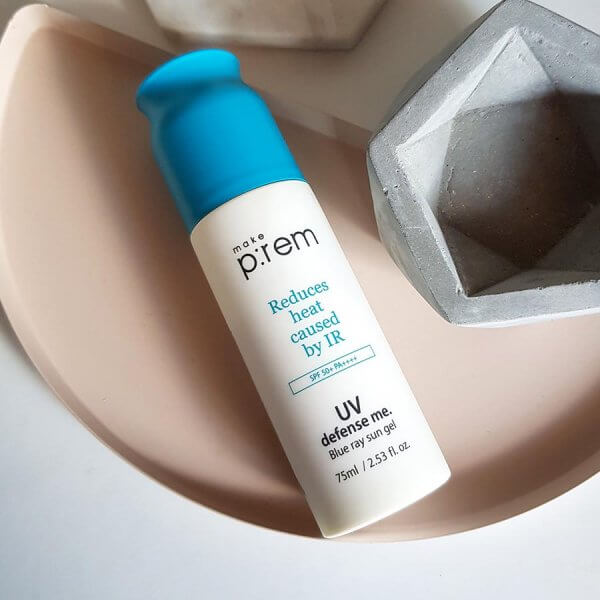
This sunscreen claims to protect against infrared radiation on top of the usual ultraviolet protection. In the marketing material it claims to cool the skin by 4.7 °C under a lamp, but interestingly it claims to do this using botanical extracts rather than the usual menthol or menthol derivatives (like menthyl lactate, menthyl ethylamido oxalate) or much alcohol (it’s on the ingredients list, but it’s quite far down). There are a handful of botanical blends coming out of Asia with similar claims, but none of them seem to use the same ingredients, and none of them are very clear on how exactly they work – I would guess that it’s either an anti-inflammatory effect, or the extract could keep water on the skin for longer (water is an excellent heat absorber).
Along with the organic UV filters and botanicals, there’s the ever-present soothing niacinamide and centella extract, and humectant chia seed extract.
Related post: What Is Niacinamide and What Does It Do in Skincare?
It comes in a convenient pump bottle and has a light texture typical of Korean sunscreens, with a slightly tacky dewy finish that works well under makeup. It has a light scent, but it’s a bit of an old-school scent that I think makes it more noticeable than it would otherwise be. It didn’t break me out or clog my pores during the 2 weeks I used it continuously (rare!).
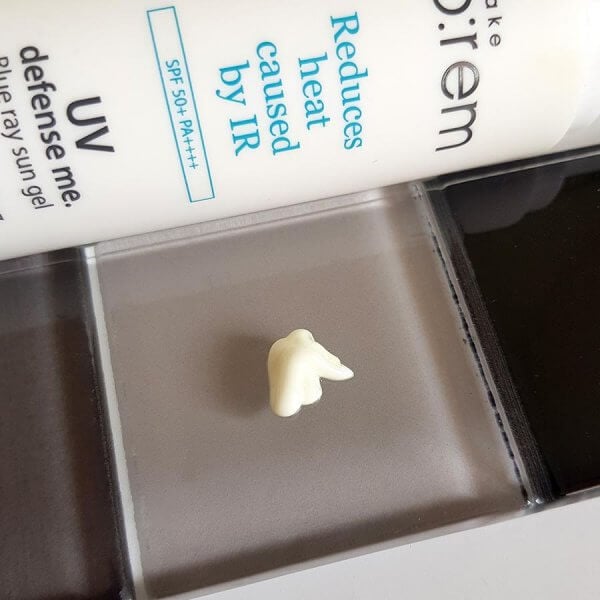
There’s also a section on the packaging next to the Period After Opening symbol where you can write down when you opened the product – this is super cute and useful, although I’m still yet to use it, so perhaps some people will never be motivated to keep track of these things.
Active ingredients: Octinoxate, Homosalate, Octyl Salicylate, Uvinul A Plus
Ingredients: Water, Ethylhexyl Methoxycinnamate, Homosalate, Ethylhexyl Salicylate, Diethylamino Hydroxybenzoyl Hexyl Benzoate, Propanediol, Niacinamide, Dimethicone Crosspolymer, Pentylene Glycol, Salvia Hispanica Seed Extract, Centella Asiatica Extract, Houttuynia Cordata Extract, Ammonium Acryloyldimethyltaurate/VP Copolymer, Glyceryl Caprylate, Fructooligosaccharides, Saccharide Hydrolysate, Ethylhexylglycerin, Acrylates/C10-30 Alkyl Acrylate Crosspolymer, Tromethamine, Pullulan, Adenosine, 1,2-Hexanediol, Betula Alba Juice, Dipropylene Glycol, Butylene Glycol, Xylitylglucoside, Sodium Palmitoyl Proline, Rubus Arcticus Callus Extract, Anhydroxylitol, Xylitol, Nymphaea Alba Flower Extract, Glycerin, Chamaecyparis Obtusa Leaf Extract, Glucose, Polyglyceryl-10 Oleate, Alcohol, Lecithin, Sodium Dilauramidoglutamide Lysine, Thermus Thermophillus Ferment, Phytosterols, Hydrogenated Lecithin, Lysolecithin, Sodium Ascorbyl Phosphate, Ascophyllum Nodosum Extract, Sodium Hyaluronate, Leuconostoc/Radish Root Ferment Filtrate, Potassium Sorbate, Disodium EDTA, Citric Acid, Fragrance.
Make P:rem sunscreen was provided for editorial consideration by CrediThink, which did not affect my opinion. Anessa sunscreen was given to me by Larry Yeo. This post also contains affiliate links – if you decide to click through and support Lab Muffin financially (at no extra cost to you), thank you! For more information, see Disclosure Policy.


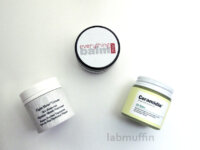
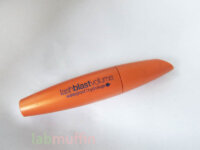
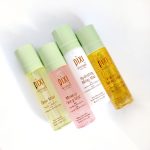
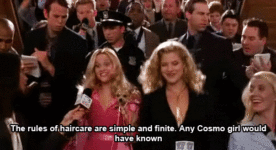
I bought the make Prem on gothamista’s recommendation but bought three to make the postage worthwhile. It’s good but a little dewy for my combo skin so best for me in winter I think. Also when I was cycling in japan last year I found it really difficult to find water resistant sunscreens and most were pretty expensive for the volume you receive. The Australians running the bike tour company I went with during the last week were advised to bring a big pump from home
Have you tried Hadalabo? Here is the Amazon name: Japan Health and Beauty – Skin lab Gokujun UV white gel (SPF50 + PA ++++) 90gAF27. I don’t think it’s waterproof, but the gel texture seems to be good for oily skin. It’s my favorite. Only negative is that it comes in jar packaging, which I find a bit inconvenient.
Cute ‘period after opening’ feature!
I’ve been wondering about sunscreen longevity – I’ve always been told not to leave sunscreen in the car because the high temperatures (in a parked car in Aussie summer) can lead it to degrade more rapidly. But we’re coming into summer and longer days, and the easiest way for me to reapply in the afternoons before commuting home would be to keep a tube in the glovebox. Do you have any info on how fast this becomes a problem? If I’m reapplying daily then a small tube could be used up within a month – is this fast enough for the heat to be a non-issue? And are there filters that are better suited to glove box life? Eg should I stick to zinc oxide or titanium dioxide? Thanks for all the great reviews and info!
The Anessa Mild Milk actually gets a lot of negative reviews with complaints similar to yours (white cast, never dries down, etc.) I think the regular version of Anessa would be a much better match for your skin, if you can get your hands on it! (https://www.ratzillacosme.com/sun/anessa-perfect-uv-sunscreen-skincare-milk-a-2020/)
Also, (unrelated to your sunscreen reviews), at some point would you consider creating a post on the differences in skin aging based on race/ethnicity? Most anti-aging recommendations are based on white people, so it would be great to get an overview of what anti-aging treatments are important for PoC (particularly people with a skin tone of Fitzpatrick 4 and up) and which treatments are not as helpful or have a diminishing return. I’m a brown woman and navigating skincare forums and studies which geared toward white skin (and, on the very rare occasion, East Asians) can be confusing, so I would love an overview from you!
I was using cos rx soothing aloe sun cream for months and then it got discontinued, I searched online for an explanation and found no answers as to why it was discontinued? I have two tubes at home and now I’m not sure whether I should still use them?!
It’s probably fine, products get discontinued for non-dodgy reasons all the time! If you want to make sure, I’d recommend emailing Cosrx customer service.
Sunscreen is difficult for me to test too, it takes a while and different activities to see if my skin agrees with it or not. I don´t tend to break out that badly though, which is a bonus, just comedones and milia that are easier to cover up when filming my videos.
I tried makeprem blue ray physical sunscreen (200ml one) and it is HORRIBLE. Not only does it leave a white cast, but also it makes you look orange when applied on top of vitamin c serum. I looked up its ingredient list and found out it has aluminum hydroxide, which does react with vitamin c, therefore the orange tint was simply the color of oxidized vitamin c. Now I’m hesitated to try any other korean sunscreens, they are a joke, their formulators do NOT think/test thoroughly before putting anything in a tube.
you should try skin aqua by rohto. it comes various form like milk, gel, and lotion